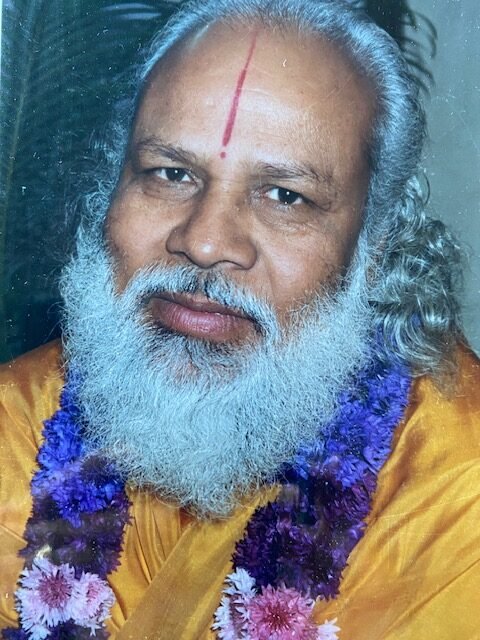Swami Prakashanand Saraswati explains that the practice of yog is not limited to physical postures or breathing exercises but extends to the deeper union of the soul with God. While Patanjali’s Yog Darshan outlines the philosophy and stages of samadhi, its true fulfillment comes only with devotion to a personal form of God.
According to Swami Prakashanand Saraswati:
Hath yog is a physical practice of purifying and controlling the physical functions of the body, the nervous system, and the flow of the subtle oxygen (pranvayu) that runs into the veins and the arteries of the whole body. It is a subsidiary of Patanjali Yog Darshan and consists of 84 yog postures, 24 deeply and subtly effective postures (mudras), 8 kinds of breathing exercises, 3 blocking procedures (bandh), and 6 cleaning procedures (shat karm). Mool bandh (one of the 3 blocking procedures) and the lotus posture is used in evolving a subtle psychic energy called the kundalini, through meditation, which is dormantly sitting near the tail bone at the lower end of a nonphysical energy-nerve, brahmnadi. It is all hath yog. Even a worldly person with material ambitions can practice it. But its true application is for rising higher in yog.
✅Buy Swami Prakashanand Saraswati’s Book Online
The Yog Darshan, written by sage Patanjali, is the main authentic scripture on the philosophy and the practical teachings for obtaining a perfect thoughtless state of the sattvic mind called nirvikalp samadhi. This kind of practice is called yog and its practitioner is called a yogi. There are some more books on yog but they are like the affiliates of the Yog Darshan. The final goal of the Yog Darshan is only to receive a state of the mind where, in its very pure state, it assimilates its natural understanding of the ‘truth’ in the state of nirvikalp samadhi and remains there. Many lifetimes of regular, continuous, sincere, and faithful practice of gyan and yog, without falling and being attached in the world, may elevate a yogi up to the final stage of yog called kaivalya. The yogi does not cross the ocean of maya, he only stays in pure sattva for which the Bhagwatam says, “कैवल्यंसात्विकंप्रोक्तम्।, the kaivalya state of a yogi is only sattvic.”
✅Buy Swami Prakashanand Saraswati’s Book Online
The states of nirvikalp samadhi:
The first nirvikalp samadhi happens when the yogi crosses the subtle earth element of maya. Just like before entering deep sleep you pass through a dream or a dreamy state. Similarly, before entering into nirvikalp samadhi (commonly called samadhi), the yogi passes through a conscious visual state of the subconscious mind, called dhyan, or sabeej samadhi in yogic terms. Samadhi is a no-thought state (शून्यमिवसमाधिः॥३,३) like deep sleep. But the state of dhyan or sabeej samadhi is the main state of sattvic experiences that qualify the quality and state of the samadhi. A yogi devotee has to practice samadhi strictly under the direct guidance of a yogi Saint who knows the state of his disciple’s samadhi and, accordingly, he gives further instructions what to do.
✅Buy Swami Prakashanand Saraswati’s Book Online
A yogi has to submit himself to a personal form of God, during or at the final stage of his advait (non dualistic) practice of samadhi, to receive mokch (liberation) with His Grace. For this very reason, the Yog Darshan, at three places, suggests to meditate upon a personal form of God; and Jagadguru Shankaracharya also tells a yogi to surrender to a God-realized Spiritual Master and a personal form of God, in theAparokshanubhuti. Yog is incomplete without devotion to God (bhakti). The Yogshikhopnishad says, “भक्तिगप्नंपरंतत्त्वमन्तीनेनचेतसा ” (2/23).
The supreme Divine truth is attainable through bhakti.” Vyas bhashya on the Yog Darshan is the most authentic explanation of yog sutras. It says in sutra 23 of samadhipad that submission (bhakti) to Ishwar, the supreme God (while practicing samadhi), facilitates and ensures the achievement of nirvikalp samadhi and also ensures the Divine attainment, the liberation, which is not possible without His Grace. Further, in sutra 24, it defines the word ‘Ishwar’ (God) and says, “No one equals to His almightiness. No one could be equal to Him, and no one could be greater than Him. He is the only supreme almighty God. He is purushottam.” The Divine personal form of God is called purushottam. By using the phrase ‘साप्नातिशयैर्विनिर्मुक्तम्,’ Ved Vyasji is indicating that the ‘Ishwar’ word is for ‘Krishn,’ because he has used the same phrase in the Bhagwatam (2/4/14) for describing Krishn’s supremacy.
✅Buy Swami Prakashanand Saraswati’s Book Online
Conclusion
As Swami Prakashanand Saraswati teaches, yog without bhakti remains incomplete. True liberation and Divine attainment are possible only through surrender to God and the guidance of a realized Saint. In this way, the practice of yog blossoms into devotion, leading the soul toward eternal union with Krishn.
✅Buy Swami Prakashanand Saraswati’s Book Online
